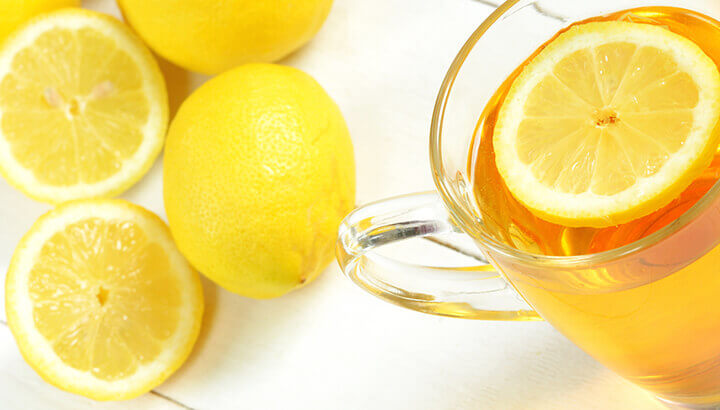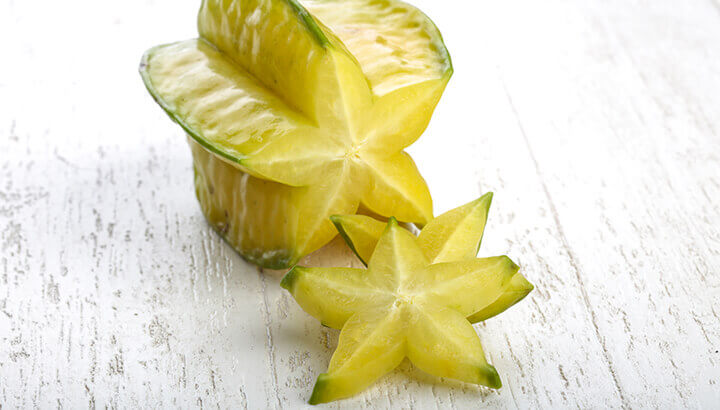
Most people know that including fruits and vegetables in their daily diet is vital for optimal health. But what many don’t realize is the importance of choosing fruits and veggies of various colors. Each color group has its own unique health benefits, and yellow fruits and vegetable are no exception. Yellow fruits and vegetables are packed with nutrients that can help your heart, kidneys, vision, digestion, immune system and more.
Lemons
How often do you include lemons in your diet? The humble lemon is a simple fruit, often reserved for lemonade or a forgotten side garnish on a lunch plate. But truth be told, these bright yellow citrus fruits are so chock full of nutritional benefits, you really should be eating them daily.
The nutritional benefits of lemons begin with vitamin C. Vitamin C is vital for immune function and skin health. Surprisingly, many American children and adults — thanks to poor diet — are vitamin C deficient or depleted, according to the American Public Health Association.
They’re also a good source of potassium and vitamin B6. Potassium helps keep blood pressure in check and positively affects cardiovascular health. And B6 converts food into energy. Lemons also contain vitamins A and E, folate, niacin thiamin, riboflavin, pantothenic acid, copper, calcium, iron, magnesium, potassium, zinc, phosphorus, protein and flavonoids.
Lemons for kidney health
Flavonoids like vitamin C are antioxidants, substances that neutralize oxidative stress which can damage body cells and contribute to chronic diseases like cancer. Lemon flavonoids help to prevent constipation, high blood pressure, indigestion and even diabetes, among other health issues.
Lemon are also highly beneficial for kidney health. A study conducted at the American Urological Association found that lemonade or lemon juice can eliminate the occurrence of kidney stones by preventing the formation of crystals.
Start your day with hot water and lemon

There are many ways to enjoy lemons daily. One of the best ways includes drinking lemon water in the morning. One lemon contains a mere 20 calories, but you’ll only need to use half a lemon in a cup of lukewarm (not hot or cold) water. Use fresh, organic lemons, and never bottled lemon juice. Be sure to drink the lemon water before eating anything else. By including lemon water in your daily morning routine you’ll enjoy:
- Better digestion
- Regular bowel movements
- Improved metabolism
- Increased liver function
- Protection against gout
- Prevention of kidney stones
- Weight loss
Pineapple
Beyond being an important source of dietary fiber, vitamin C, manganese, copper and folate, this tropical treat also contains bromelain. Bromelain is an enzyme with potent anti-inflammatory and anti-swelling benefits. It’s also highly absorbable in the body and does not lose its ability to break down proteins. In fact, the body can absorb significant amounts of bromelain without any major side effects.
Pineapple for joint pain and post-surgical trauma
One of the many benefits of bromelain includes relieving joint pain, often associated with osteoarthritis. In fact, a study published in the journal Biotechnology Research International found that bromelain in pineapple may provide an ideal alternative treatment to NSAIDs (nonsteroidal anti-inflammatory drugs). NSAIDs are often used to treat arthritic pain, among other ailments. They are associated with potentially harmful side effects.
Bromelain has many therapeutic benefits and is thought to be effective in the treatment of angina, bronchitis, sinusitis, blood clots and wounds. Research suggests that bromelain is also effective at reducing postoperative pain and swelling, and may even improve the potency of antibiotics.
Organic, pineapple chunks are now easily found in most grocery store frozen food sections, making it convenient for throwing into smoothies, topping yogurt, cottage cheese or even adding to your pizza.
Yellow summer squash
Not only are squash one of the largest groups of vegetables, they are also some of the oldest cultivated crops on earth, dating back to 10,000 years. Yellow squash grows throughout the United States and is easily found year-round at most grocery stores. Come summertime though, farmer’s markets are flooded with even bigger varieties of sunny yellow squash in all shapes and sizes.
Great for cardiovascular health, diabetes and PMS
Yellow squash is a rich source of vitamins A, C, B6, magnesium, fiber, folate, riboflavin, phosphorus and potassium. In addition, it’s high in manganese, a mineral which helps the body process fats, carbohydrates and sugar. Manganese may also help with osteoporosis, arthritis, PMS, diabetes and epilepsy, suggests the University of Maryland Medical Center.
The potassium and magnesium content in yellow squash is beneficial for cardiovascular health and helps reduce the risk of heart attack, stroke and blood pressure. When picked young, yellow squash can be eaten raw, and makes a nice addition to both sweet and savory dishes. According to Whfoods.com, yellow squash has an extremely low GI (glycemic index) making it a great substitute for pasta.
Yellow peppers
In comparison to red and green peppers, what exactly are yellow peppers? Well, yellow peppers, along with orange peppers, are harvested at the midpoint between unripe peppers and mature peppers — green being “unripe” and red being “ripe.” Yellow peppers are therefore sweeter than their somewhat bitter tasting counterpart, green peppers.
Yellow peppers are loaded with vitamins and minerals, and are a rich source of vitamin C. They’re also a good source of vitamins A, B6, E and K1, potassium and folate acid. In addition, yellow peppers contain beneficial antioxidants, including capsanthin, violaxanthin, quercetin and luteolin.
Great for eye health
Lutein and zeaxanthin are other carotenoids found in bell peppers. Canadian research suggests that these carotenoids may help improve eye health considerably. In fact, they’re shown to protect the human retina, which is the light-sensitive inner wall of the eye, from oxidative damage.
Several studies conclude that eating yellow peppers regularly may reduce the risk of both cataracts and macular degeneration. Keep a stash of sweet yellow bell pepper strips in the fridge with a healthy Greek yogurt dip to snack on throughout the day.
Starfruit

Yellow starfruit, also called carambola, is a sweet and sour waxy fruit that is in the shape of — you guessed it — a star. The interesting thing about star fruit is that the entire fruit, even the waxy skin, is edible. The flesh has a mild yet sour taste, which makes it popular in several dishes. Not surprisingly, this yellow gem is a rich source of vitamin C, supplying 52 percent of the RDI. It also contains fiber, protein, vitamin B5, folate, copper, potassium and magnesium.
Loaded with healthy plant compounds
The plant compounds in star fruit make it even healthier. Quercetin, gallic acid and epicatechin are compounds that have powerful antioxidant properties, among other health benefits. These compounds have been shown to help prevent fat cell formation, reduce fatty liver and lower cholesterol in animal studies.
You may have avoided buying starfruit because you weren’t entirely sure how to eat it. No problem! The best way to enjoy starfruit is to rinse it in water, cut off the ends, slice it and remove the seeds. Just make sure to choose fruits that are ripe. Throw them in your salad or simply enjoy them as a snack.
Go for gold
Yellow fruits and vegetables are also good for your skin, teeth and bones. They are teeming with bioflavonoids, carotenoids and antioxidants. Apart from the “obvious” yellow banana that’s loaded with potassium, you may want to also include these in your diet: quince, golden beets and yellow beans. Enjoy!
— Katherine Marko

